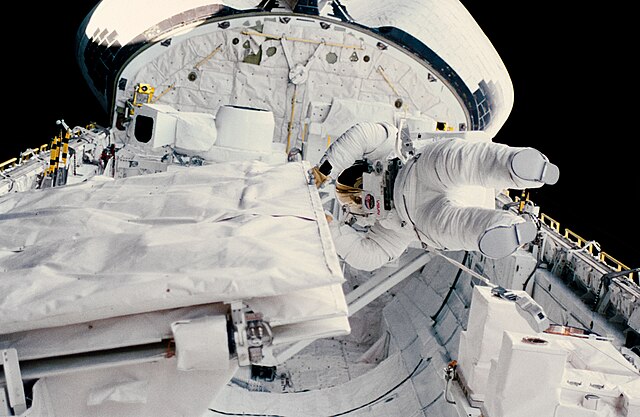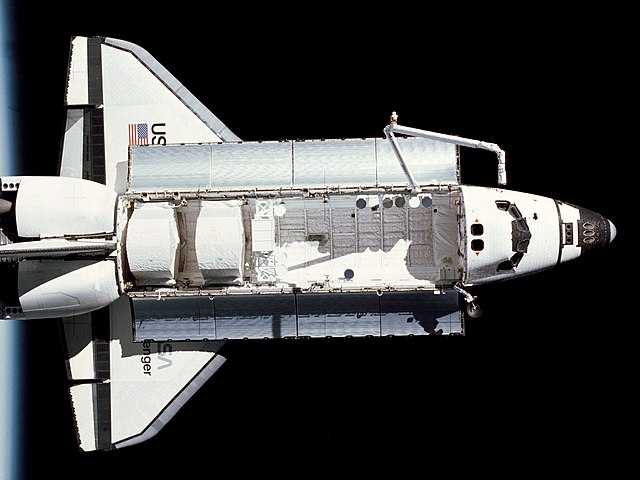STS-41-G was the 13th flight of NASA's Space Shuttle program and the sixth flight of Space Shuttle Challenger. Challenger launched on October 5, 1984, and conducted the second shuttle landing at Kennedy Space Center on October 13, 1984. It was the first shuttle mission to carry a crew of seven, including the first crew with two women, the first American Extravehicular activity (EVA) involving a woman (Sullivan), the first Australian-born person to journey into space as well as the first astronaut with a beard and the first Canadian astronaut.
ERBS during deployment
Top: Paul D. Scully-Power, Robert L. Crippen, Marc Garneau Bottom: Jon A. McBride, Sally K. Ride, Kathryn D. Sullivan, David C. Leestma. The replica of a gold astronaut pin near McBride signifies Unity.Space Shuttle program← STS-41-D (12)STS-51-A (14) →
SIR-B antenna deployment
Sullivan during the EVA
Space Shuttle Challenger (OV-099) was a Space Shuttle orbiter manufactured by Rockwell International and operated by NASA. Named after the commanding ship of a nineteenth-century scientific expedition that traveled the world, Challenger was the second Space Shuttle orbiter to fly into space after Columbia, and launched on its maiden flight in April 1983. It was destroyed in January 1986 soon after launch in a disaster that killed all seven crewmembers aboard.
Challenger in orbit in 1983, during STS-7
Challenger being prepared in 1985 for its penultimate flight, STS-61-A
Challenger atop a Crawler-transporter, en route to the launch site for its final flight, STS-51-L
Challenger being transported by Shuttle Carrier Aircraft 905, shortly before being delivered in 1982








